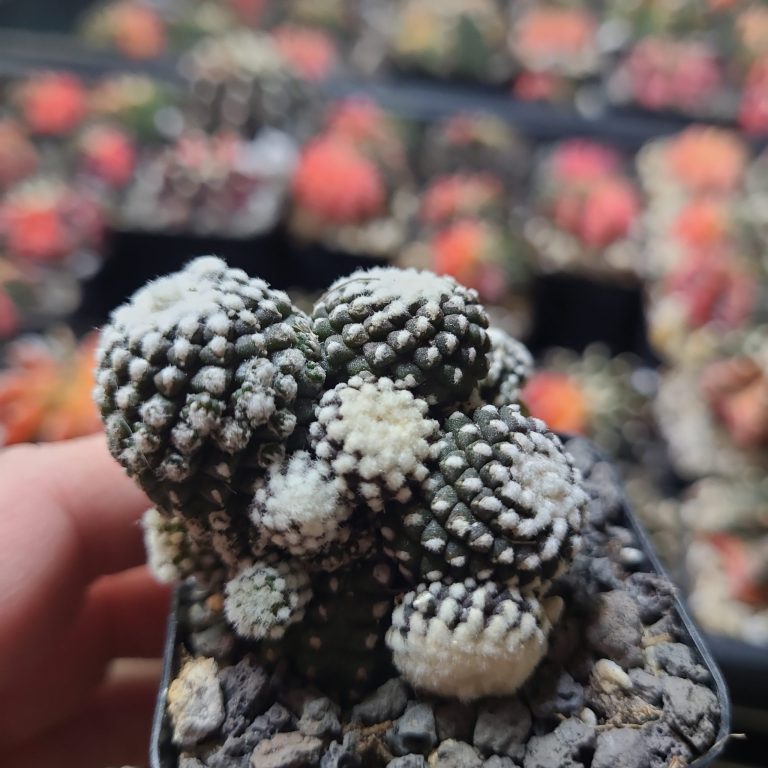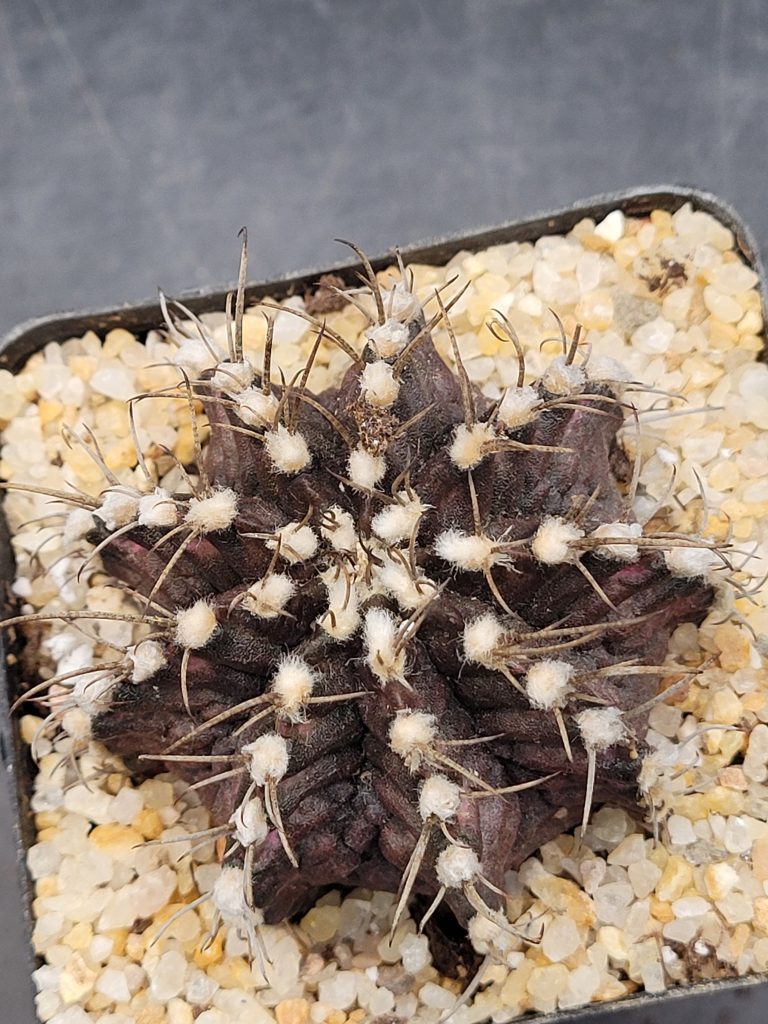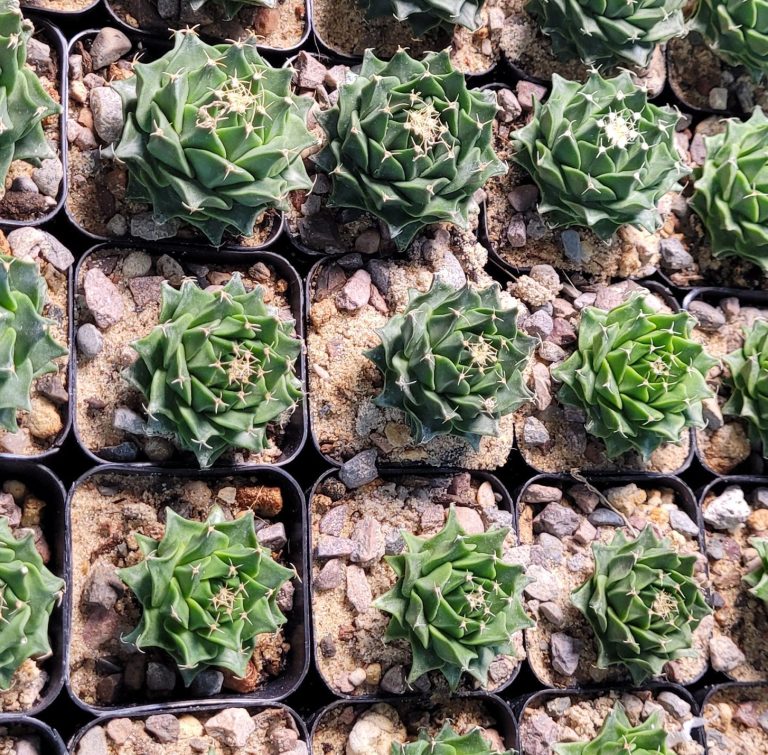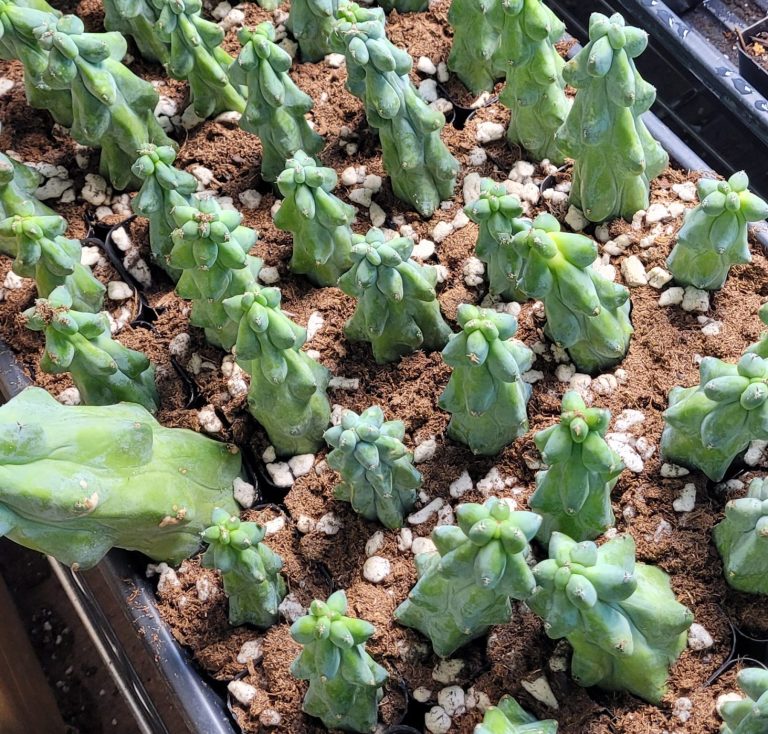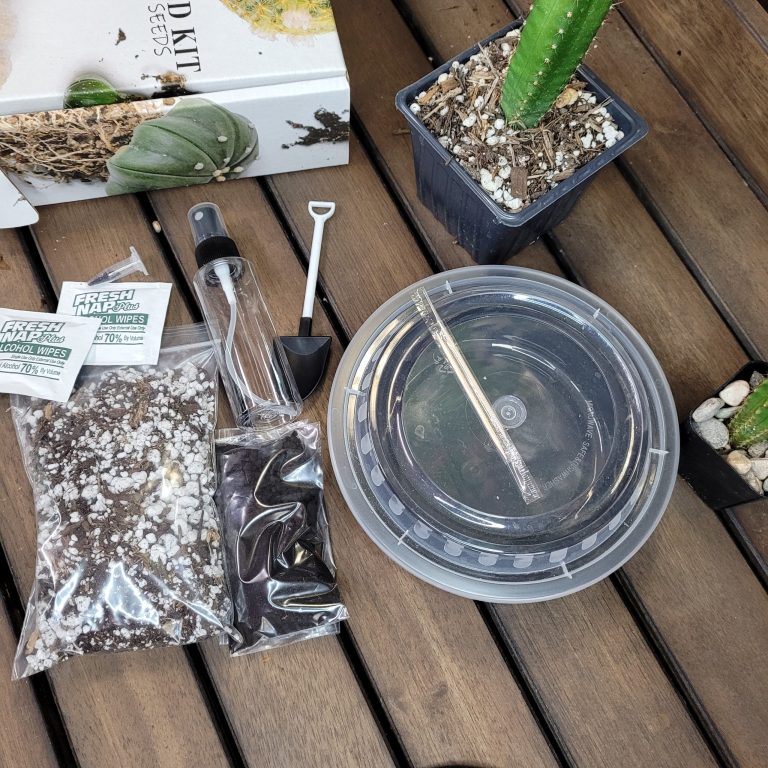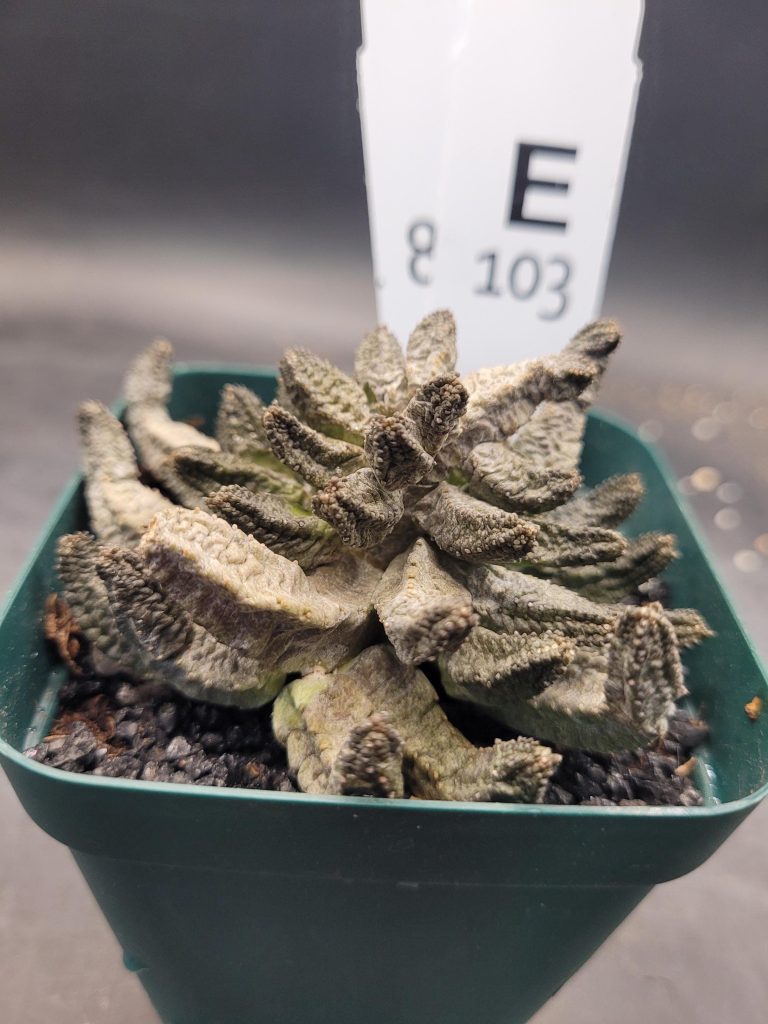If you’re looking for a cactus that strikes the perfect balance between subtle beauty and curious charm, Coryphantha Elephantidens Inermis might be your ideal choice. Known for its larger-than-usual, rounded tubercles—resembling “elephant teeth”—this variety distinguishes itself further by lacking the typical spines found in many other cacti (hence the term “inermis,” meaning “unarmed”). The result is a smooth, sculptural form that’s both elegant and easy on the eyes.
Below, we’ll delve into what makes this cactus special and provide a straightforward guide to help you keep it happy and thriving in your home or greenhouse.
What Makes Coryphantha Elephantidens Inermis Unique?
- Smooth Appearance:
Unlike typical Coryphantha species that showcase clusters of spines, the inermis form is characterized by its spine-free tubercles. This yields a clean, rounded look, making each plump tubercle stand out. - Elephantine Tubercle Structure:
As the name “elephantidens” implies, these tubercles are larger, somewhat tooth-like lumps. This shape adds an almost architectural quality to the plant, giving it a whimsical, mound-like silhouette. - Delicate Blooms:
In warm, bright conditions, a mature Coryphantha Elephantidens Inermis can produce charming, pale to brightly colored flowers near the top, creating a gentle contrast against its greenish-gray body.
Essential Care Guide
1. Lighting Requirements
- Bright, Indirect Sunlight: Position your cactus so it receives abundant filtered light. A few hours of gentle direct morning or late afternoon sun can benefit the plant, but harsh midday rays in extremely hot climates might cause discoloration or stress.
- Indoor Placement: A south- or west-facing windowsill is often ideal, provided there is some sheer curtain or partial shading during peak sun hours.
2. Watering
- Infrequent & Thorough: Like most desert cacti, Coryphantha Elephantidens Inermis prefers the “soak and dry” method. Water deeply, then allow the soil to dry completely before watering again—roughly every 2–3 weeks in spring and summer.
- Dormancy Care: In fall and winter, reduce watering significantly to once a month or less, as the plant naturally slows its growth in cooler temperatures.
3. Soil & Potting
- Well-Draining Mix: A specialized cactus or succulent soil blend, often containing perlite, pumice, or coarse sand, is crucial to preventing root rot. You can also create your own mix by combining standard potting soil (one part) with coarse sand or grit (one part) and perlite (one part).
- Pot Selection: Ensure your pot has drainage holes. Terracotta or clay pots help wick away moisture, which can be beneficial for a plant sensitive to waterlogging.
4. Temperature & Environment
- Warm & Dry: Ideal temperatures range between 65°F and 85°F (18°C–29°C). Protect the cactus from frost or prolonged chilly conditions (below 50°F or 10°C), as it’s not frost-tolerant.
- Low Humidity: This species naturally comes from arid environments, so normal indoor humidity is typically fine.
5. Fertilizing
- Light Feeding: During active growth (spring and summer), apply a diluted, balanced cactus or succulent fertilizer once a month or every other month. Skip feeding in the dormant season to allow the plant its natural rest period.
Common Issues & Tips
- Root Rot from Overwatering:
The spineless tubercles can give the impression of a more delicate cactus, but the main concern remains the same: avoid waterlogged conditions. Always allow excess water to drain away, and wait for the soil to dry before the next watering. - Sunburn or Stress:
If placed in intense midday sun without acclimation, the cactus may show yellowish or burnt patches. Introduce brighter conditions gradually, and consider partial shading in extremely hot climates. - Potential Blooms:
A healthy, mature Coryphantha Elephantidens Inermis may reward you with subtle but lovely flowers in late spring or early summer. Ensuring sufficient sunlight and appropriate watering can encourage these blooms. - Pest Watch:
Monitor for common cactus pests like mealybugs or scale. Treat early with insecticidal soap or neem oil at the first sign of infestation.
Why Choose Coryphantha Elephantidens Inermis?
- Visually Striking Yet Soft: The lack of spines gives it a smooth, almost plush look—rare among cacti, making it an attractive choice for enthusiasts wanting something gentle yet sculptural.
- Low-Maintenance Charm: Perfect for windowsills or shelves where it can receive bright light, it’s a great fit even for those who are newer to growing cacti.
- Conversation Starter: Its distinctive “elephant tooth” tubercles make for an engaging story, appealing to collectors who enjoy sharing their passion for unique succulents.
Final Thoughts
Coryphantha Elephantidens Inermis offers a delightful blend of novelty and ease of care. Its plump, spine-free tubercles and occasional blooms combine to create a calm yet captivating presence in any plant collection. By providing bright, indirect light, moderate watering, and well-draining soil, you’ll be on your way to enjoying this rare cactus’s gentle form for years to come.

